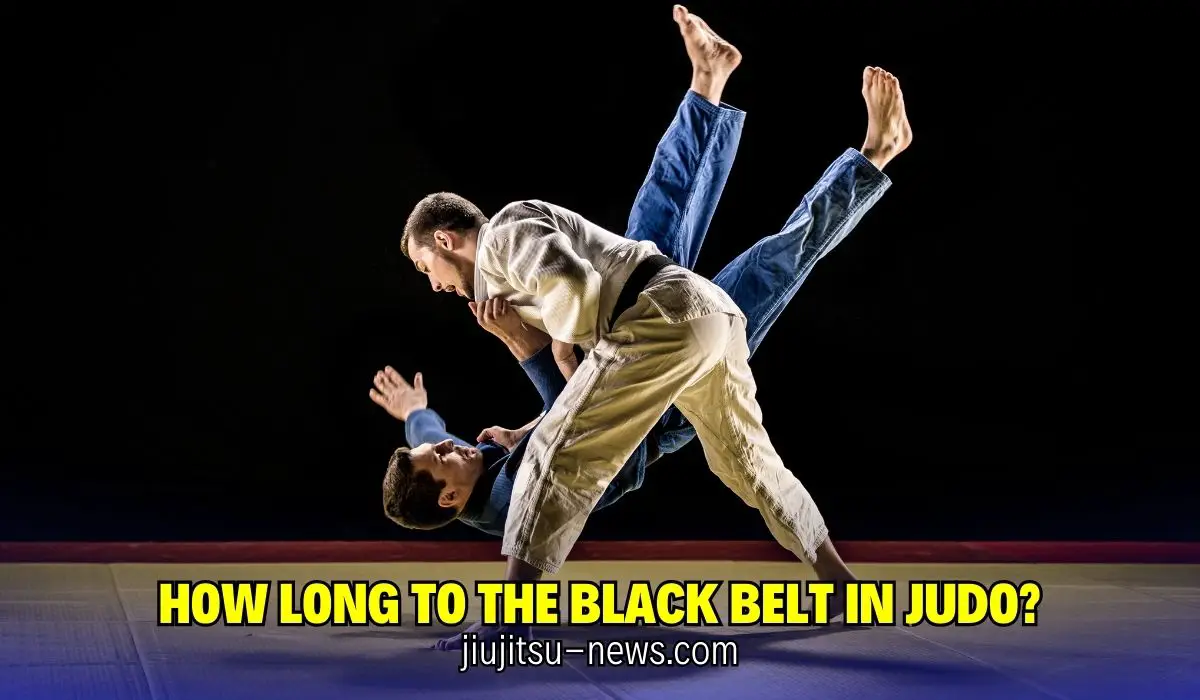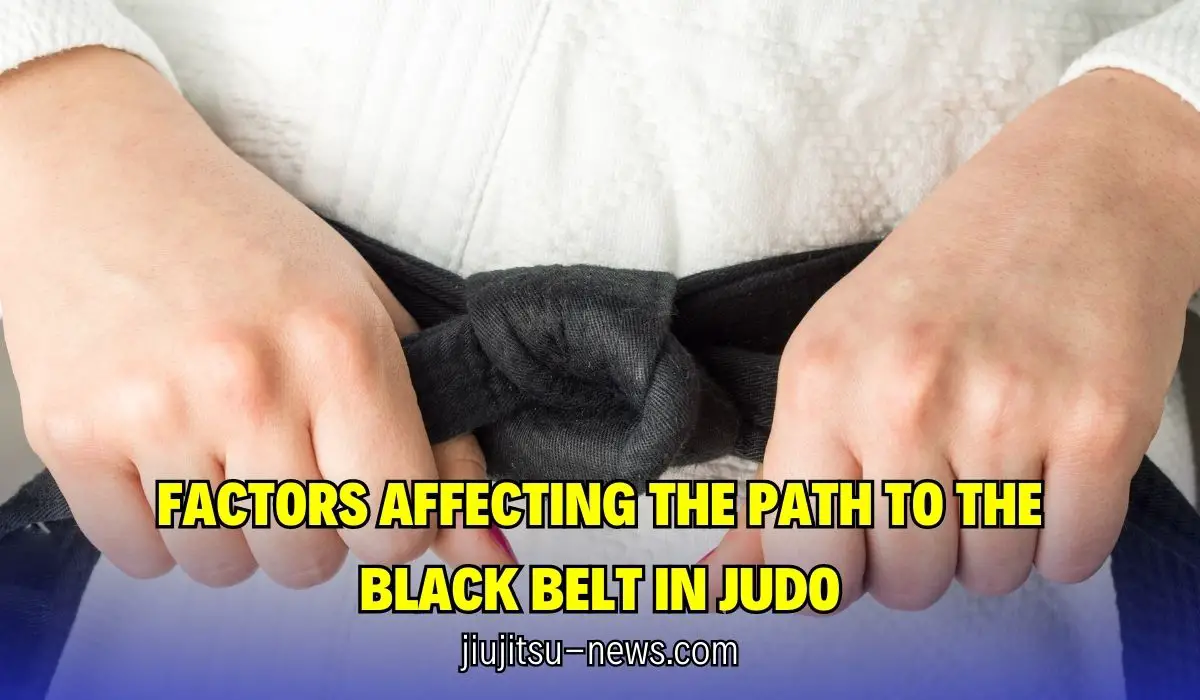Judo is a famous Japanese martial art that is celebrated in the Olympics. It is well-known for its effectiveness in self-defense. It often raises the question: How long does achieving the prestigious black belt take?
The journey to this rank is measured by time and the unwavering commitment and resilience of the practitioner. Earning a black belt in judo is not a quick and easy task. It usually takes five to seven years; for many, it can extend to a decade or more.
This article will delve deep into the process of attaining a black belt in judo, highlighting the different stages and the various factors that can influence the duration of this arduous journey. From the initial steps to the final achievement, we will examine what it truly takes to become a black belt in judo. Stay tuned!
Judo Martial Art: An Overview

Judo, a Japanese expression that translates to “gentle way”, was brought to life by Jigoro Kano near the end of the 19th century.
No matter what age or fitness level, this exercise focuses on using an opponent’s energy and movements against them.
The judo belt system, illustrated by different colored belts, symbolizes the progression and expertise of the students.
How Long Does It Take to Get a Black Belt in Judo?

Achieving a black belt in judo is not a quick journey; it requires time, dedication, and consistent effort.
The time it takes to learn judo varies from person to person. This depends on the person’s goals, training intensity, and ability to understand judo.
Earning a black belt in judo takes about half a decade of serious dedication. Nonetheless, most students require around ten years to gain the judo black belt.
What Other Belts Are There in Judo Besides the Black Belt?

The judo belt system has different colors, from white for novice belts and progressing to black belts. Then there are higher ranks, like white/red and red belt, and finally, black belt.
The Judo ranking system goes up to the black belt, and it consists of the following belts:
- White Belt (6th Kyu)
- Yellow Belt (5th Kyu);
- Orange Belt (4th Kyu);
- Green Belt (3rd Kyu);
- Blue Belt (2nd Kyu);
- Brown Belt (1st Kyu);
- Black Belt (1st–5th Dan)
- Red and White Belt (6th–8th Dan)
- Red Belt (9th–10th Dan)
As one progresses through the levels of Judo, they demonstrate an increasing comprehension and usage of Judo techniques.
It usually takes a year to progress to the next belt level, and it may take several years to achieve the highly respected black belt.
Factors Affecting the Path to the Black Belt in Judo

Several factors influence the time it takes to reach the coveted black belt in judo. Let’s break them down!
Judo Training Intensity and Frequency
Consistency and regularity in training are essential for progress in any martial art.
The more frequently a judoka trains, the faster they tend to progress. Regular practice allows muscle memory development, technique refinement, and better physical conditioning.
A judoka who trains three times a week will progress faster than a judoka who only trains once a week.
Individual Dedication and Effort
Individuals’ commitment and effort in judo training significantly affect their progress.
Consistent attendance, active participation, and a willingness to learn and improve contribute to faster advancement through the belt ranks.
Judo is a discipline that requires dedication and sacrifice, and the progress of those who train hard will be significantly impacted by their commitment.
Instructor’s Guidance and Expertise
A knowledgeable and experienced instructor is vital to a judoka’s development.
Good guidance, feedback, and constant correction help students improve their techniques and learn the judo principles.
Competition Experience
Competing in judo tournaments can speed up a judoka’s progress. It offers an opportunity to gauge one’s abilities against other practitioners, obtain priceless experience, and discern areas that need work.
That being said, participating in competitions isn’t necessary for earning a black belt.
Belt Promotions and Grading Examinations
Judo schools and organizations have standards. To be promoted, you must meet them. You also have to pass a grading exam.
These tests examine the individual’s technical aptitude, comprehension of judo fundamentals, and general grasp of martial arts. Achieving success in each of these stages is necessary to ascend toward the rank of black belt.
Can One Easily Earn the Black Belt in Judo?

To earn a black belt in Judo, you must work hard for a long time, spend a lot of time and effort, and have good skills and discipline. Becoming a black belt in Judo shows you have a lot of ability and understanding.
In Judo, students start with a white belt and progress through various colored belts known as kyus. Depending on the Judo organization or school, the number of kyus usually ranges from six to ten.
Every belt has a distinct level of proficiency, and practitioners must demonstrate their competence with a selection of techniques, throws, holds, and groundwork to advance to the next belt level.
To obtain a black belt in Judo, one must be willing to commit to years of regular training and practice. This includes mastering multiple techniques, understanding Judo’s doctrines, increasing physical strength and suppleness, and building experience through regular sparring and contests.
Conclusion
The black belt rank is an aspirational goal for many judo practitioners, but the true benefit of training lies in the personal transformation it can bring.
With sustained effort, the support of mentors, and a willingness to tackle difficulties, it’s possible to make steady progress through the belt levels.
The achievement of a black belt is certainly an accomplishment, but the real reward lies in the journey of self-improvement and dedication.
Related Article: Explore how Jiu-Jitsu and Judo differ! Uncover the efficiency of these martial arts in MMA, self-defense, and more. Click here to find out which one will best help you reach your goals!
Frequently Asked Questions

Can Anyone Achieve a Black Belt in Judo?
With dedication, consistent training, and perseverance, anyone can achieve a black belt in judo. It is a journey that requires time and effort, but it is attainable for individuals of all ages and backgrounds.
Judo is a martial art sport that focuses on throwing and controlling opponents using joint locks and throwing techniques. It is a great way to build strength and confidence, and it can be a great way to make friends and connections in the community.
How Often Should I Train to Progress Faster in Judo?
Training frequency depends on your personal goals and schedule, but training in judo at least two to three times a week is generally recommended to make consistent progress.
There are many different ways to structure your training program, but the general idea is to do some judo at least two to three times per week to make consistent and sustainable progress.
Is There an Age Limit to Start Practicing Judo?
There is no age limit for starting judo. Judo classes are available for children, teenagers, and adults of all ages. It is never too late to begin your journey in judo.
No matter if you are new to judo and want to get the fundamentals down or are a more seasoned player who wants to perfect your techniques, judo is suitable for everyone, regardless of age.
How Important Is Competition Experience for Black Belt Advancement?
While competition experience is not mandatory for obtaining a black belt in judo, it can enhance progress and skill development.
However, it is not the sole determining factor. Focus on consistent training, technical proficiency, and overall growth in judo.
It is important to note that the benefits extend beyond the physical aspects and encompass personal growth, character development, and a deeper understanding of oneself.

